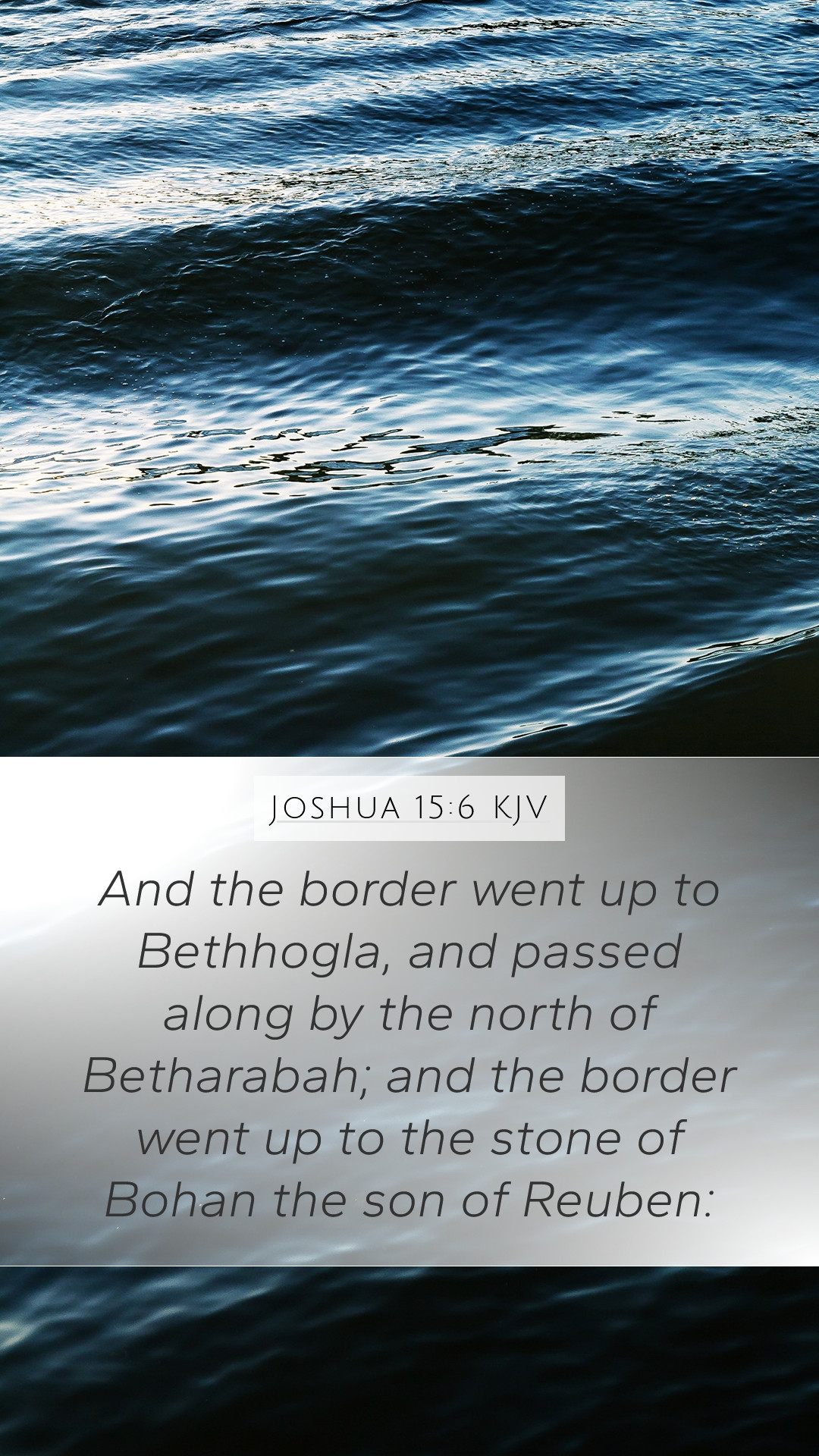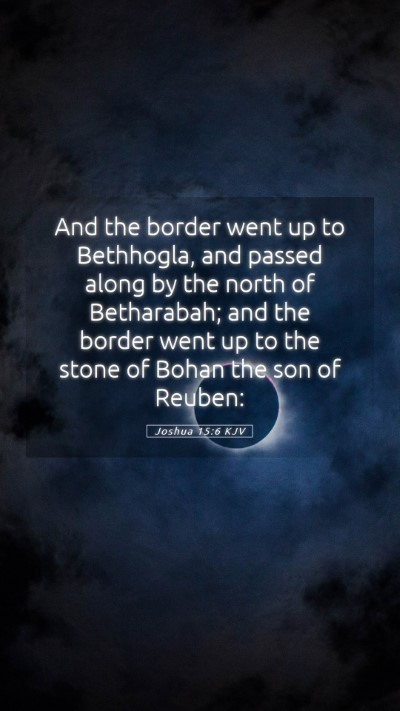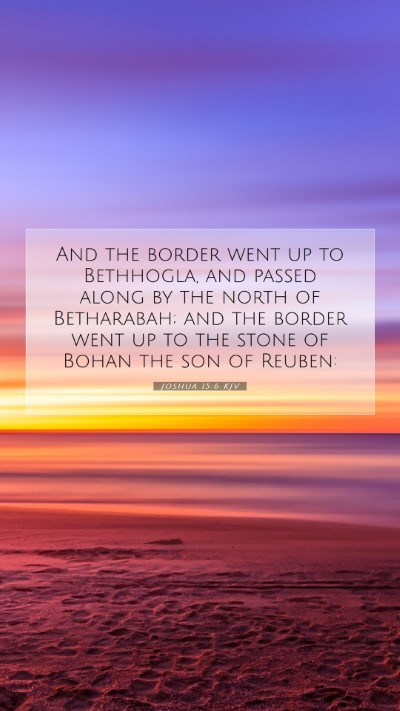Understanding Joshua 15:6
Joshua 15:6 states:
"And the border went up to Beth-hoglah, and passed along by the north of Beth-arabah; and the border went up to the stone of Bohan the son of Reuben."
Bible Verse Commentary
This verse is part of the broader context that describes the boundaries of the tribe of Judah. Its importance lies not only in geographical details but also in the implications for the heritage and inheritance of this tribe within the promised land.
Verse Analysis and Biblical Exegesis
The analysis of Joshua 15:6 reveals several key insights drawn from the traditional commentaries:
- Location Significance: The mention of specific locations like Beth-hoglah and Beth-arabah is critical as it underlines the heritage and land allotted to the tribe of Judah, showcasing God's promise to the Israelites.
- Historical Context: Understanding the history of these places provides depth to the narrative, indicating that the Israelites were establishing themselves in their promised land after years of wandering.
- Symbolism of Boundaries: The borders set in this verse symbolize the importance of inheritance, identity, and God's promises manifested in physical territory.
Insights from Public Domain Commentaries
Based on the insights of Matthew Henry, Albert Barnes, and Adam Clarke, we gather a rich understanding of this verse:
Matthew Henry's Commentary
Matthew Henry emphasizes the faithfulness of God in fulfilling His promises. The specified locations mark not only physical land but reflect God's providence in providing for His people.
Albert Barnes' Notes
Barnes points out that this section is crucial for the allocation of the land to the tribes. He notes that the borders of Judah were significant in understanding the tribal divisions and the fulfillment of God’s covenant with the descendants of Abraham.
Adam Clarke's Exposition
Clarke's exposition delves into the etymology and historical relevance of these locations, elucidating their roles within Israel's narrative and the implications on modern biblical understanding.
Application of Joshua 15:6 in Daily Life
The personal application of Joshua 15:6 can be outlined as follows:
- Recognizing God’s Guidance: Just as the Israelites had their borders defined, individuals can seek God's guidance in defining their life's path according to His will.
- Understanding Heritage: This verse reminds believers of the importance of recognizing their spiritual heritage and the significance of being part of God’s family.
- Claiming Promises: Believers are encouraged to claim the promises of God in their lives, paralleling the way the Israelites claimed their promised land.
Cross References
This verse can be related to various other scriptures which echo themes of land allocation and boundaries:
- Numbers 34:1-15: Detailed instructions regarding the borders of the Promised Land.
- Deuteronomy 3:12-20: Discusses the division of the land among the tribes of Israel.
- Joshua 18:1-10: The latter distribution of land to remaining tribes highlights the importance of boundaries.
Conclusion
In conclusion, the study of Joshua 15:6 provides rich insights into the historical context, the fulfillment of God’s promises, and the applications relevant to believers today. By understanding the scripture in its fullness, one is better equipped to apply its lessons in everyday life. As you dive deeper, consider utilizing various Bible study tools and resources to enhance your understanding further.


